#lithuanian culture
Text

Graveyard angel
#lithuania#baltic#aesthetic#beautiful#graveyard#graveyard angel#woodcarving#gravestone#velines#all souls day#all saints day#lithuanian culture#lithuanian traditions#lithuanian landscape#baltic culture#baltic traditions#autumn#fall#autumn aesthetic#graveyard photography#my photography#graveyard aesthetic#witch aesthetic#this gravesite is STUNNING#the pillar is in the style of traditional lithuanian folk art
63 notes
·
View notes
Text



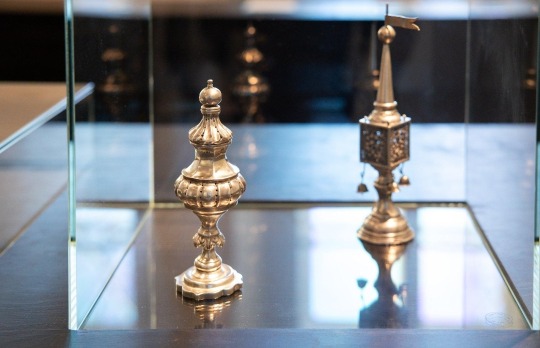
🏛The Museum of Culture and Identity of Lithuanian Jews (Litvaks) opens in the Vilnius this Wednesday.
According to the leaders, visitors to the museum, still unofficially known as the Litvak Museum, will get to know the culture and customs of the Jews of Lithuania.
"The forces of anti-Semitism are growing in the world, and this is becoming a threat. Education and training can be tools for unification and development of understanding. I hope that the museum will promote dialogue between different cultures, helping visitors from all over the world to discover timeless, common symbols," said museum director Simonas Streltsovas.
According to the museum, exhibitions of modern design will allow museum visitors not only to learn about the history of the Jews of Lithuania but also to get acquainted with the world-famous Litvaks.
The Museum of Culture and Identity of Lithuanian Jews will operate in a four-story building at Pilimo 4A street.
(c) delfi.lt
4 notes
·
View notes
Text
anybody got links to anything about Lithuanian trad culture I'm trying to learn more about my heritage as a Lithuanian bc I'm a 3rd gen euro American and my great-grandpappy is Lithuanian I'd appreciate it!
0 notes
Text
wod: PILIS- castle
Pilis, (feminine) - castle

according to wikipedia, pilis has the same root as Ancient Greek πόλις (pólis), both comming from Proto Indo European tpelH- , meaning both city and fortification. Make sense so it should be easy to remember
in context:
Giedimino pilis - Giediminas’ Castle
It seems in English the common name for the castle is rather “Upper Castle in Vilnius” and Giediminas part is only reserved for the iconic red brick tower: Gedimino pilies bokštas (Giediminas castle tower)
photo: Gedimino pilis by Augustas Didzgalvis.jpg https://lt.wikipedia.org/wiki/Gedimino_pilis#/media/Vaizdas:Gedimino_pilis_by_Augustas_Didzgalvis.jpg
#lithuania#lithuanian language#lithuaninan word of the day#lithuanian culture#travel in lithuania#gediminas castle tower
0 notes
Text

Lithuanian woman, Lithuania, by Lietuvos nacionalinis kultūros centras
#lithuanian#lithuania#europe#eastern europe#folk clothing#traditional clothing#traditional fashion#cultural clothing
268 notes
·
View notes
Text

Stanisław Bohusz-Siestrzeńcewicz, [Stanislovas Bohušas-Sestšencevičius]
Mały faun [ Little Faun]
after 1900, oil on canvas
#poland#polish culture#polish art#polish paintings#polish painters#european art#european paintings#european fine art#polska#Stanisław Bohusz-Siestrzeńcewicz#Stanislovas Bohušas-Sestšencevičius#siestrzeńcewicz#lithuanian art#lithuanian painters
71 notes
·
View notes
Text
The world culture day in Kaunas part 3
My home city Kaunas, Lithuania🇱🇹
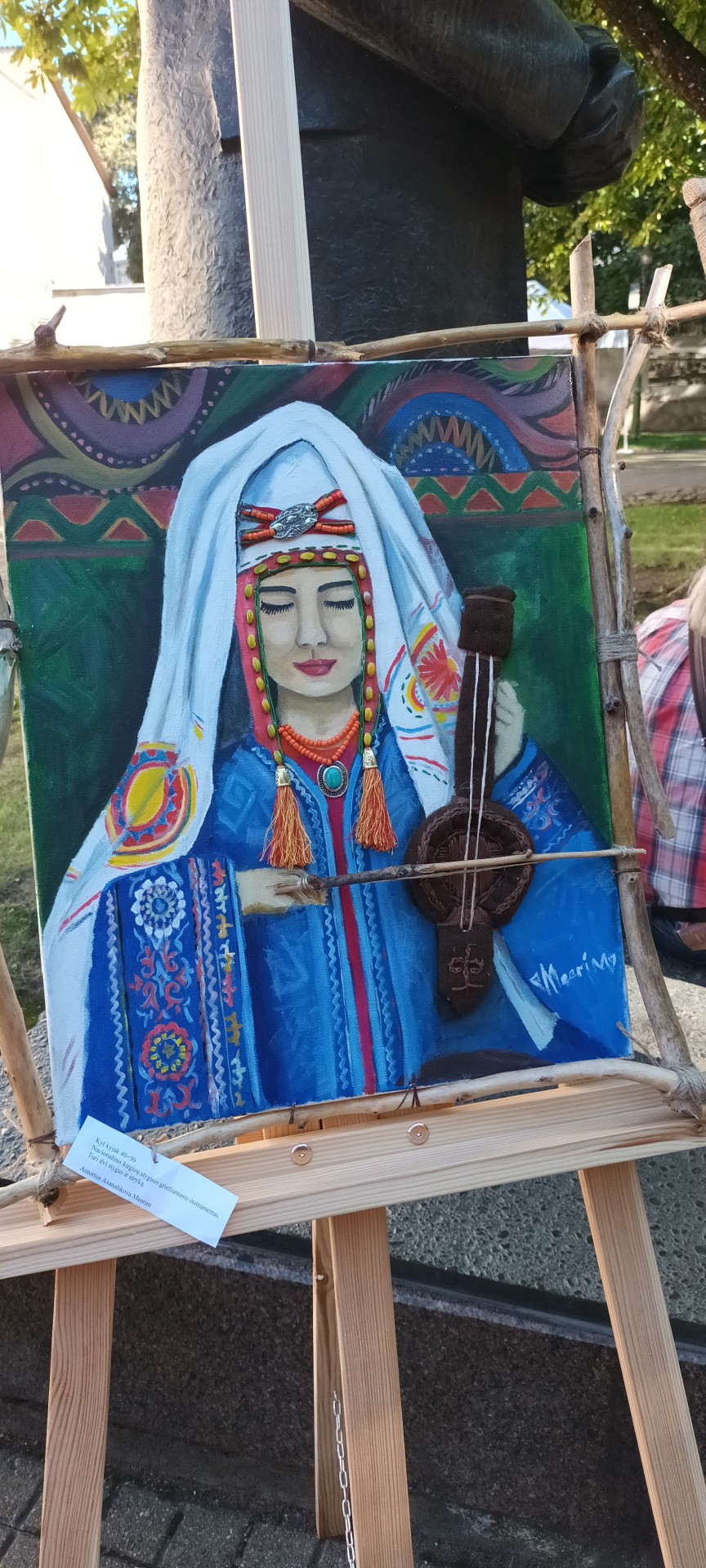


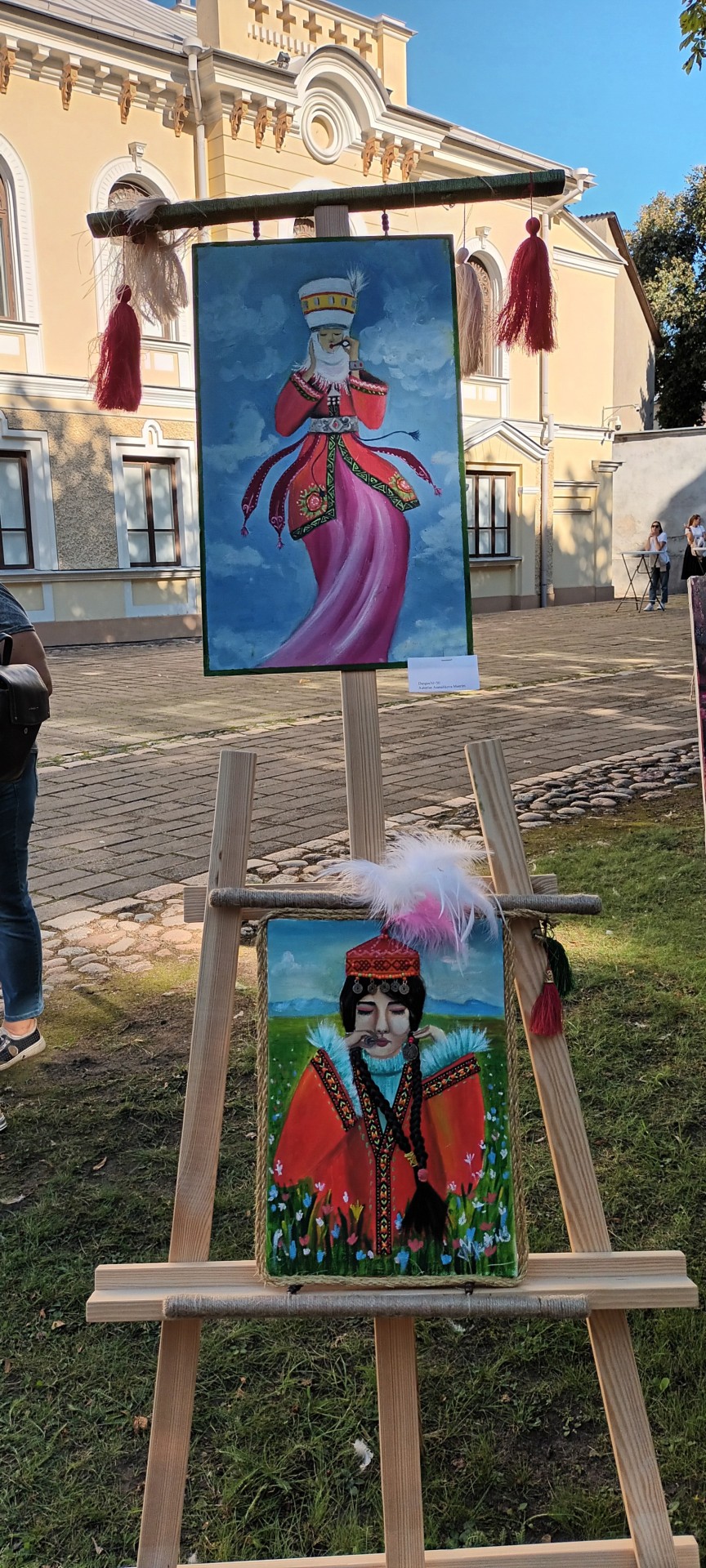
Today in Kaunas we have a world culture day
And i mostly saw Central Asian culture and Kyrgyzstany culture
#my home city kaunas#kaunas#lithuania#lithuania 🇱🇹#リトアニア#リトアニア🇱🇹#kyrgyzstan#baltic countries#baltic states#north europe#northern europe#central asia#central asian culture#lithuanian hetalian#hetalian
34 notes
·
View notes
Text
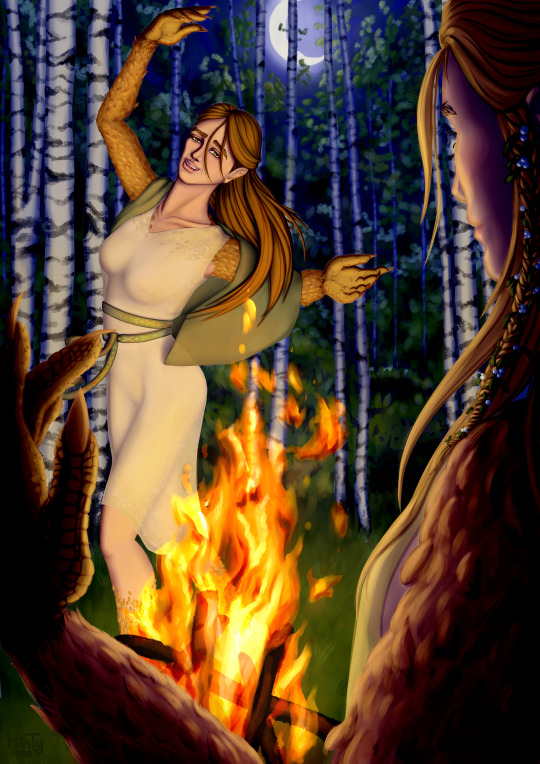



Here's my contribution to the LITHUbeasts project! Lots of Lithuanian artists came together to portray their interpretations of our folklore creatures. I took it upon myself to draw laumės!
Read up and check out other works in the project tag and #lithuartist (most of the works are on Twitter under the same tags! Not sure if any of them post here on Tumblr)
Laumės (plural) are quite fascinating, so there are English, Ukrainian and Lithuanian translations of their description for ya!
And a couple fun facts: Thursday is their day so I posted this on a Thursday (everywhere apart from Tumblr cause I forgot lol, but let's pretend I did it on the right day ok)!
Also, I felt like it was very sweet that the day when I finished the drawing there was a double rainbow in the sky :") It's like they saw my contribution hahaha
#art#fantasy art#fantasy women#folklore#folktales#lithuania#lithuanian#lithuanian folklore#baltic#baltic folklore#illustration#oc#original character#folk#folk art#folk magic#oc illustration#artists on tumblr#tumblr art#culture#laumės#digital art#digital illustration#digital drawing#digital artist#lithuartist#lithubeasts#artist support#folk creature#creature design
7 notes
·
View notes
Photo
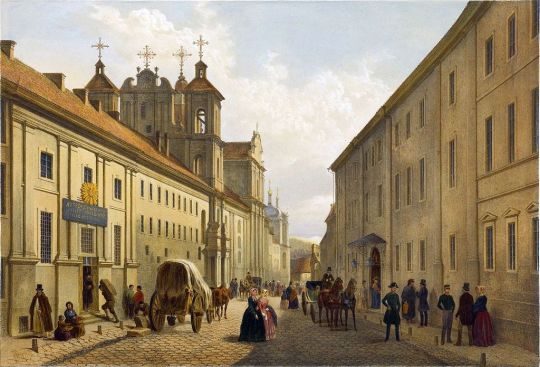
“Street in Vilnius” (Now in Lithuania) by Zygmunt Vogel (1764 - 1826)
■ Zygmunt Vogel (15 June 1764, Wołczyn – 20 April 1826, Warsaw) was a Polish illustrator, educator, and painter in the classical style. He was sometimes called Ptaszek (Polish for “Bird”), a reference to his name (which means “bird” in German) and to the many years that he traveled almost continuously.
#Zygmunt Vogel#poland#polska#painting#art#artist#painter#polish#lithuania#lietuva#lithuanian#vilnius#wilno#european#culture
37 notes
·
View notes
Text
If i don't learn every language in the world, i'll die, i think
#i just think it's rewarding and fun to learn languages not to mention that you can't learn a language without learning ab the culture#bc culture and language are sososososo tied together it's impossible and that like. broadens my horizons and viewpoints and it's so#human and Good to be aware and learn others' cultures and like. fuck.#they have Welsh on duolingo i've been wanting to learn Welsh for so long aaaaaa#i also wanna learn Romanian and Lithuanian tbh. <- she wants to learn all her mutuals' languages
35 notes
·
View notes
Text
me reading about marius and cosette's romance like you will never be world ain't ready
#idkkk its cute but i am so bored by it tbh .#thats the thing abt marisette ig#theyre so chaste theyll never almost hook up in the parking lot outside the lithuanian cultural center. whats even the point#brick lb
5 notes
·
View notes
Text

The Moon on Vėlinės night
#lithuania#baltic#aesthetic#beautiful#moon#velines#all souls day#all saints day#baltic traditions#baltic culture#baltic witch#baltic demon#witchy#lithuanian landscape#lithuanian traditions#lithuanian culture#pagan#graveyard#graveyard photography#my photography#autumn#fall#autumn aesthetic#graveyard aesthetic#witch aesthetic#night
35 notes
·
View notes
Text
Song of the day:
Ko gervynas
My colleagues couldn't explain to me what "Ko gervynas" song means "because it's meaningless," but I really want to understand what I'm singing, at least šiek tiek. XD
So,
There are lots of repeating parts, especially on the beginning:
Ko gervynas, ko kurkovo, lioj siūdo, ko kurkovo.
Yeah, it looks meaningless. But. Looking at the structure overall and some phonetical to neighbouring to Lithuania languages similarities, I can only suppose it means:
Where is cranberry, where is kurkova(s), pour the rain here, where is cranberry.
I'm not sure what "Lioj siūdo" means but it's most likely an archaic imperative form of the verb "lyti" - "to pour", and it also looks similar to Ukrainian "лій сюди" [lij śiudy] - "pour here". N.B. Ukraine, Belarus, and Lithuania used to be a one state, the GDL.
I don't know what kurkova(s) is either, hell, I don't even know what the Nominativ of this word should look like there are two settlements in modern Poland called Kurkowo, both quite close to Prussia (or on former Prussia), but I don't think it matters that much because in Polish, kurkowa means:
inaczej wieśniak, który jest bardzo irytujący swoim prostackim zachowaniem zazwyczaj dziewczyna.
otherwise, a peasant who is very irritating with their boorish behavior, usually a girl.
Okay. N.B. In late Commonwealth times, Lithuanian language was considered "peasant" and boorish. If to take it into account, it means:
Where is cranberry, where is a peasant(?) girl, pour the rain here, where is cranberry.
This phrase👆 repeats and repeats, so let's move on:
Upava karvelėlis, liaj, upava, lylia.
This one was hard. Karvelėlis means a girl, or a young woman. Not sure. "Liaj" looks like an Imperative form to me, and I only suppose it means "to sing". According to Polish dictionaries, "lilia (lylia) symbolizes virginity, purity, innocence, impeccability, modesty, glory, grace, incomparable beauty, majesty, heavenly happiness".
With Upava it's even harder. It can be:
A name. Very easy.
A reduced form of the Ancient Ruthenian word "kupava". Which also can be a name. This was the name given to girls born on the holiday of Kupala, the day of the summer solstice. Kupava is also called a plant - water lily. The word kupava means handsome, well-dressed, festively dressed: “На нашій вулиці все купали й молодці, а нема, нема найкулавшого” - is sung in one of the Kupala songs. It also can mean "the one who baths in rivers and lakes". Kupava, Kupavna - "a woman with a proud gait, magnificently dressed" - a Ukrainian folk explanation of the name.
Derivative of Upavas. Upavas in Sanskrit means "a fast, a religious or health ritual." Can be, but I don't think it matters much.
Overall, the next phrase is translated as:
A beautiful young woman, sing, (k)upava, sing, a lily.
This phrase is also a refrain, but this time, together with the first phrase. Let's move on:
Krės krės, varškės. O kam? Vaikam. Kokiem? Mažam, ne dideliem.
Finally, something understandable:
"Krės, krės, I'm carrying the cottage cheese. To whom? To children. To which? To little ones, not big."
A dialogue is a very common artistic medium for folk songs. We also have an assonance here and a bit of alliteration, a bit of tautology.
it is important to note that at the same time there is a repetition of sounds:
"Put puliut" - which in real life reminds some bird sounds. Or gurgling. I'm not an expert in bird sounds, unfortunately.
"Tu tu tu" and "Zum zum zum". Easy.
"Gyvi, gyvi" - "live live".
Let's move on:
Moka krunklys krunkliuoti, krunkliuoti,
O karvėlis burkuoti, burkuoti,
Garnys kaklalį rungyti, rungyti, rungyti.
Moka žvirblis čirškėti, čirškėti,
Moka strozdas švilpuoti, švilpuoti,
Šorka nori padėti, padėti,
Garnys kaklalį rungyti, rungyti, rungyti.
O gelguta kukuoti, kukuoti,
Garnys kaklalį rungyti, rungyti, rungyti.
Animal planet time:
A crow can caw, and a pigeon can coo,
And a gray heron can compete with its neck (with other herons).
A sparrow can chirp, and a magpie wants to help,
And a gray heron can compete with its neck (with other herons).
A thrush can whistle, and a cuckoo can cuckoo,
And a gray heron can compete with its neck (with other herons).
At the same time, there is a refrain "gyvi, gyvi, sveiki, gyvi" - which approximately means "live, live and be healthy".
In conclusion:
It's a typical Lithuanian spring song.
4 notes
·
View notes
Note
'#limited edition 1980 Lithuanian oiter?????' i see you are an eggu of culture

Of course bb gorwl
5 notes
·
View notes
Text
I’m at an event for a culture I am not a part of if anyone wants to send asks that would be more fun
#it’s an Eastern European festival#Latvian Ukrainian Serbian and Lithuanian festival#I’m selling honey soda which is bomb but not at all culturally related#I’m not inserting myself to make someone else money#feel free to send tattoo stories#kink ratings#or secrets
2 notes
·
View notes
Text
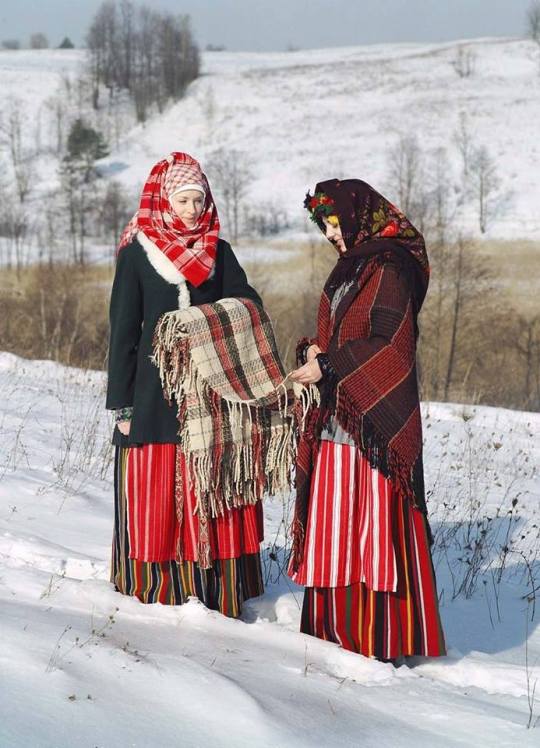
Lithuanian women, Lithuania, by alkas.lt
#lithuanian#samogitian#lithuania#europe#eastern europe#folk clothing#traditional clothing#traditional fashion#cultural clothing
461 notes
·
View notes